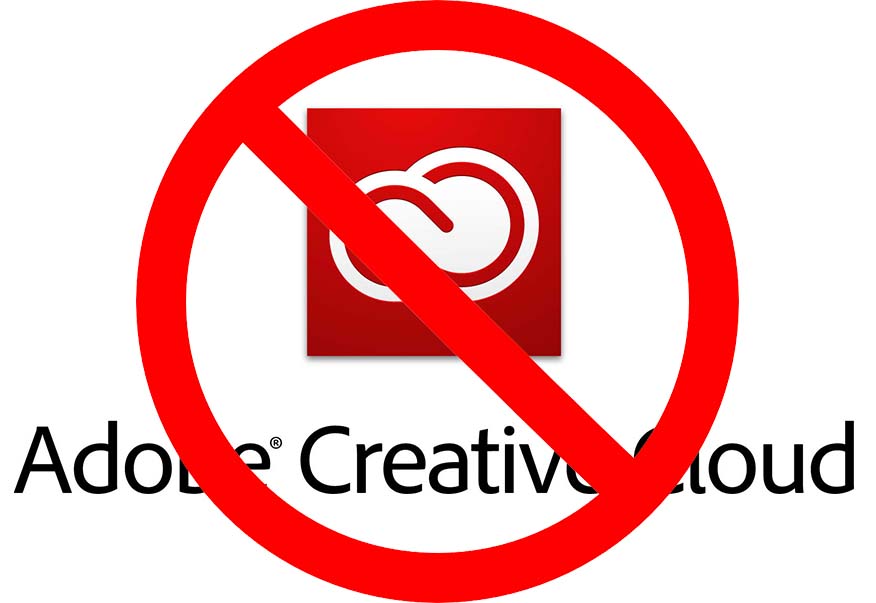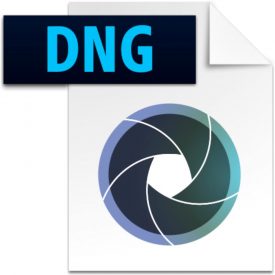
In the eyes of many photographers, Adobe made a fatal error the other day when they abandoned their standalone edition of Lightroom in favor of an Adobe Creative Cloud based subscription model. The excitement accompanying the launch of Lightroom CC 2018/CC Classic 2018 quickly turned to confusion and anger for a variety of reasons. Of course, some accepted the additional costs, while others with small libraries barely noticed the different pricing structure and how it scales. If that wasn’t enough, there was rampant speculation about security/ownership/access and so much more.
I could spend thousands of words exploring each of these issues, but one thing is clear… ADOBE ISN’T LISTENING TO THEIR CUSTOMERS! So why bother talking about how their pricing structure is designed to make stockholders happy and not photographers? The new Lightroom CC 2018 is a great product that delivers a lot of new features, but it’s not for Photographers, and Adobe isn’t listening to customers anymore… So who is?

If you follow me on twitter, ON1 and Alienskin reached out and are listening to what customers want. So are companies like Macphuns, that launched a page responding to Adobe’s misstep. There is also Iridient Digital, that makes a Fujifilm optimized RAW engine, and I can’t forget Affinity Photo. All of these companies are very responsive to their customers’ needs, and I am sure there are many more that I am forgetting or am even unaware of at this time. If a company producing a product based on your needs isn’t valuable to you, you can always go with Capture One Pro, Apple Photos, etc… they do a great job of telling you what you need and how you need it, which is good enough for a lot of users. Capture One Pro wouldn’t be in this lesser group if it supported all cameras equally, but declining to support the GFX and other cameras sets a dangerous precedent that can’t be ignored, especially when the cameras work via hacks.

The ubiquitous presence of proprietary software in the world of photography is something photographers have to start vocally disapproving of because it has contributed to this problem. Embracing multiple RAW formats, instead of getting behind one like DNG, is partially why Adobe has remained a defacto standard in the world of photography until today and, yes, I realize Adobe developed DNG. The race to support new cameras as they are released, and the ability of RAW interpreter programs to selectively prioritize or discriminate against cameras, largely comes from the burden imposed by these proprietary RAW formats that we all accept from manufacturers. This burden gives a large company like Adobe a substantial competitive advantage and, until recently, they often lead the way in supporting cameras first, which made them the defacto standard RAW editor for many.
The quasi-monopolistic stranglehold that we allowed Adobe to develop on photography technology becomes so much worse when you realize the retroactive damage that Adobe catalogs created. The years spent editing and curating in Lightroom wouldn’t be so problematic if there were a nondestructive, universally recognized sidecar file that allowed you to take your work anywhere, instead of being faced with the difficult decision of whether to leave, clean and even edit all of your photos again. Today, you can maintain your file structure at least, depending on how you setup your catalog, but little else; and if you move into the cloud at Adobe’s insultingly high prices, you are going to have an even more difficult time migrating later. So what is there left to use?

I’m currently shopping around for options and I like a lot of what ON1 has to offer, but I also like what I’m seeing from others too. I might stop using Lightroom for a while and try a new workflow in a few apps at one time. ON1 is promising Fujifilm simulation in the future, and it looks like they are building cloud support that will be cloud provider agnostic, which I look forward to seeing mature as their recently released iOS application grows. Macphun’s Aurora HDR product impresses me too, so I might give them an extended look. I also have access to a few more novel editors that I demoed, but didn’t seriously consider moving to until now, because I really want a RAW converter with a future. I’ll even try Exposure X3, which wasn’t on my radar previously, just because Alienskin reached out and has Fujifilm simulations. They want a customer compared to Adobe taking a customer for granted.
The future of photo editing is definitely being able to pick up any one of your devices to edit with and have it instantly sync, but how you go about that is important. Adobe wasn’t the first to pull off seamless access to a large photo library. Apple and Google both launched good solutions awhile ago, but they aren’t professional quality. Apple charges you for storage, while Google does not under most circumstances. Both cloud solutions are quite a bit cheaper than Adobe’s solution, and I’d venture to say they are more reliable. Here’s where fanboys go crazy, about a variety of small things, but both services work quite well and they aren’t overly proprietary.

On the other hand, Adobe continues to make their catalog system more proprietary. If they really believed in the quality of their product, they would give us all an easy way to migrate our large libraries to the competition and back if we chose. Their promise to continue supporting standalone copies of Lightroom is laughable because the label “classic” is code for going away soon in the majority of minds; plus it’s a subscription product. The subscription model doesn’t lend itself to less connected software because Adobe has to keep checking the validity of your license. The trapping of thousands upon thousands of hours of work in the Lightroom catalog almost begs for the formation of a class action lawsuit to free our work from Adobes shackles. Migrating a huge catalog could be a catastrophic time sync, especially if you no longer wish to pay for access to Lightroom.

Hopefully, in the coming days, we will see companies come up with ways to migrate our edited RAW data from Adobe’s platform to theirs. If it proves to be a difficult task, then at least let us know when we might be able to import them with ease so we can retire Lightroom and switch with some peace of mind because the move to the cloud will make this task significantly more difficult. What should have been a celebrated release is becoming chaotic, with photographers jumping ship left and right. Photographers need to get back to work, so it’s likely that the first company with a good solution will capture the majority of the market because I highly doubt Adobe will fix this disaster.
It’s my belief that Adobe is trying to move us all to their cloud because it’s the ultimate proprietary solution to lock in customers. If they wanted to do cloud photo editing right, they would have used the hooks in a modern file system and cloud storage API’s to let us bring our own cloud service provider. Providers like Dropbox, OneDrive, iCloud, Google Drive, Box and more all have API’s for file synchronization, and Adobe could have worked with them if they had special needs. Many of us already have a lot of storage with these companies that we pay for because they are industry standards. The competition also would have driven down prices, which are artificially high due to users not grasping how inexpensive data center storage is at these levels. Even Apple has responded to pricing pressure in recent years because other platforms were significantly cheaper. These differences would all be great for customers, and would help drive adoption of Lightroom CC Cloud, which could even make up for the subscription requirement; but Adobe only thought about their profits.

Adobe avoiding criticism and dialog with the community should make everyone seriously consider leaving them for good. It just might be worth the trouble to see their revenues decline for once, and to put that money in a deserving company’s pocket. Companies should work for our dollars, just like we work for our money, instead of having an arbitrary amount deposited in their account every month for doing nothing. Does Adobe expect us to thank them for their brutal pricing model that punishes the most prolific photographers that almost certainly will want to use the cloud? This situation gets even worse when you consider that many have large amounts of unpaid work in their library that they now have to pay a monthly fee to store on the cloud at excessively high prices, which can’t be passed along to anyone. They shouldn’t have to split their library or pick and choose what to sync. I don’t have to decide what I sync from my Mac Pro\MacBook Pro\iPads\iPhones to iCloud because Apple scales their pricing tears reasonably instead of arbitrarily. I can also backup absolutely everything with CrashPlan for a very reasonable monthly fee, which amounts to more terabytes than I would like to admit. So why can’t Adobe manage reasonable storage prices if they must force us all to subscribe? Adobe dropped the ball and ON1, Macphun, Affinity Photo, Alienskin, Iridient Digital and others have this unique opportunity to pick it up and run with it now.
